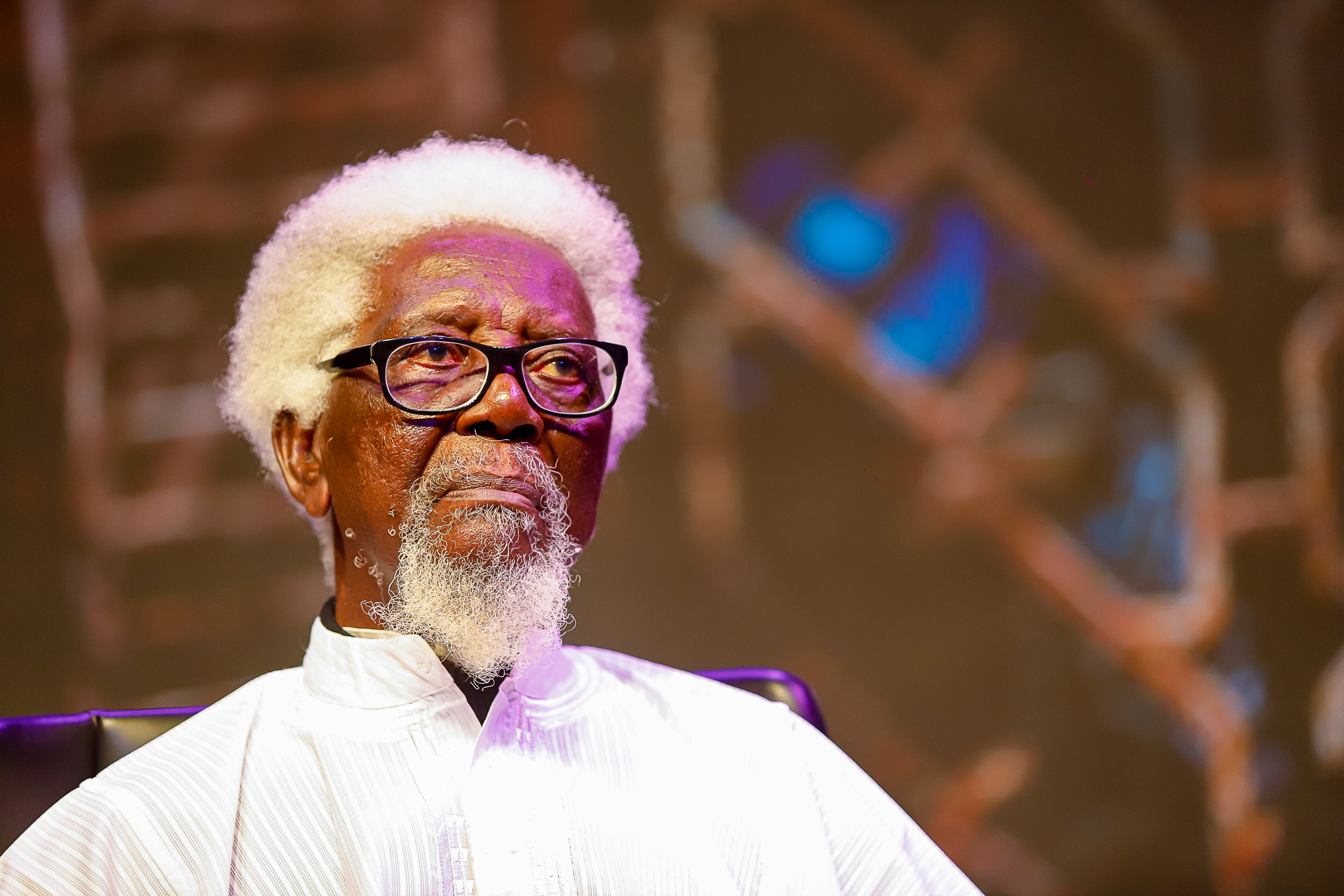

Golden Lion for Lifetime Achievement to “Baba” Demas Nwoko, the architect-designer who helped redefine the image of African aesthetics, bringing a new sense of identity and pride to the international art scene.
In the world of contemporary design, few names are able to combine tradition and modernity with the same audacity as Demas Nwoko. Born and raised in Nigeria and educated in Paris, Nwoko is a pioneering figure in African design, renowned for his ability to seamlessly blend diverse cultural influences into timeless artistic creations. His work has served as an inspiration for a generation of African artists and designers, encouraging them to explore their own cultural identities and celebrate local traditions in innovative ways. “When pushed,” says Lesley Lokko, curator of this year’s Biennale Architettura, “he refers to himself as an “artist-designer”, which speaks both to the polyglot nature of his talents and oeuvres, and to the rather narrow interpretation of the word ‘architect’ that has arguably kept his name out of the annals.
In the classical notion of architecture, creative imagination and architecture are often perceived as two distinct entities, whereas in your professional practice, they coexist in a similar realm, and can even be seen as the same thing. Do you believe that today there is still an inherent difference between art and architecture? This question is particularly relevant here in Venice, as we have both the Biennale Arte and the Biennale Architettura. Rather than seeking to establish a dichotomy between the two, our aim is to have a more precise look at both. In your view, why is imagination crucial in the field of architecture?
In the culture where I come from, the African culture, there’s not much separation between the plastic arts and architecture because in the African culture the art culture is very much democratized. It’s not a prerogative of a class. We enjoy creative arts, be it in plastic arts or in theatrical arts. Everybody enjoys it on the same platform, it’s not expensive. To enjoy a good plastic art, you don’t have to be rich. You enjoy it, everybody enjoys it equally because it’s present automatically in everything we do. Our culture is much more exhibitionist. What I mean is that everyone participates. There’s room for the highly creative. Persons are free to express their own creativity and you don’t have to pay to enjoy it. For instance, when you build a house the painting of the wall is not done by a professional painter, it is done by the housewife herself and you have to repeat it, because of its temporary nature, maybe monthly or bimonthly. So while she’s doing that you find her creative patterns on the same wall, monochromatic patterns made by her hands as she is doing the normal job of just polishing the wall.
Our culture is much more exhibitionist. What I mean is that everyone participates. There’s room for the highly creative. Persons are free to express their own creativity and you don’t have to pay to enjoy it.
Even the young boys who every morning sweep the floor outside with a long broom, finally are making patterns on the ground, which remain almost throughout the whole day. They are fresh in the morning then as people walk over it they get erased, so next morning you have to do it again, and these are definite artistic patterns. So our culture allows everybody to express themselves. If you look at the variety of art, plastic art and their styles all over the world which are given names of periods, I can show you that none of them existed in the African art culture. Once the people have evolved their own architecture and have the space they need, they don’t change it. If our result is less innovative the activities of man on it is more vibrant in our part of the world. To me, you can’t really create a permanent architecture without having this art part. Before it was temporary but repetitive, and it could be refreshed every day. But now you have to make a photo, include it in the social so that it looks as if my works are continuously new creations. I’m trying to adapt to the more fossilized modern towns and cities which are very much fixed. It’s like knowing Paris 50 years ago and going back there now, it looks as if nothing has changed, because it has been built up and what is built cannot be really destroyed. But in our own place we are just building our cities, they’re new so it also gives more chance of choosing models from all over the world at any given time.

Your work, while modern, is inspired by African aesthetics and traditional construction methods. In your opinion, what can the rest of the world learn from African design?
There is a global problem of cultures being allowed to exist. It is normal the whole world accepts that everybody live according to their own culture. This includes aesthetic culture in the art and architecture. But most of the Third World have found themselves in a position where their own traditional and aesthetic culture have been rejected, or better they’ve been told that they should abandon their own tradition and go along with the global design as global design is what is available in the global market. Relationship between cultures is still essentially an economic one. So while the European cultures hold onto their own culture and keep moving it as a live demand, the Third World don’t have the luck of being allowed to do that. This is very unnatural. This is against the natural evolution processes. This is against the freedom of choice of how to live and enjoy by everybody. So what has happened? For example African culture has completely collapsed in the Third World. Housing, which was once upon a time, very ample and adequate, it’s now hard to be found. Today having a decent housing looks like a mirage. There are many factors that caused this because to build a house now depends exactly on the cost of material that is in the global market.
Relationship between cultures is still essentially an economic one. So while the European cultures hold onto their own culture and keep moving it as a live demand, the Third World don’t have the luck of being allowed to do that. This is very unnatural.
Everybody says that you should make this material cheaper, especially in the Third World so that it can be affordable to them. So the only way that this problem can be solved is to find a way of allowing them to continue their tradition which was well within their reach. This means step backwards and pick up their broken ends and find how to begin develop the way of providing habitat for themselves. The surest way is to go back to what you used to know and start from there. You should build your own technology according to your need and not acquiring things because they are available or because you have money. For example you are in need of housing, if for thousands of years you were able to meet it, why wouldn’t you be able to meet it now? So that’s why I decided to persist. I’m sure that long tradition, which was once viable. is still viable today. So I’ve taken models from tradition and I have proved that what I’m trying to reach is very possible. To put it in a simple way, I’m using modern materials. To be viable, you have to reengineer and produce with modern processes using local industry, which is a win-win situation. You have to develop your own technology industry with all material, because after all, the materials that are being used all over the world are sourced mostly from the Third World. Most of the time we have the advantage but this has been abandoned. I don’t know why, this is a situation that arose maybe from details of colonialism or racial domination, which again is not a natural phenomenon. We can build a sustainable world for ourselves once again, because our world used to be very sustainable before.
In Lesley Lokko’s words: “At The Laboratory of the Future we’ll try not to correct but to complete some unwritten pages in the history of Architecture”. If you were to write one of these blank pages what would you write?
I’m just completing a book on some design parameters for architecture in the Tropics. In this book I put together exactly what I think are the essence, the settings and what should be happening in architectural design. I believe that architecture is a regional art. So architecture in the Tropics all throughout the world is the same. From my survey I found that even the traditional models that we are repeating are important for the development of architecture because, maybe this is not true for the whole world, but in my own zone, which is the Tropics, I think there’s a strong history concerning technology as well. This means that we can continue to develop it and provide some solutions in this book which are not theoretical ones. These are solutions that I have already incorporated in my actual work. So I hope that this will demystify the assumption of the parameter that architecture should differ from the geographical zones. Moreover the shape of the interior will be determined entirely by the kind of life of the people who use it. I don’t have to say it in two pages, I’ve already said it in the handbook.
Featured image: Demas Nwoko, © New Culture